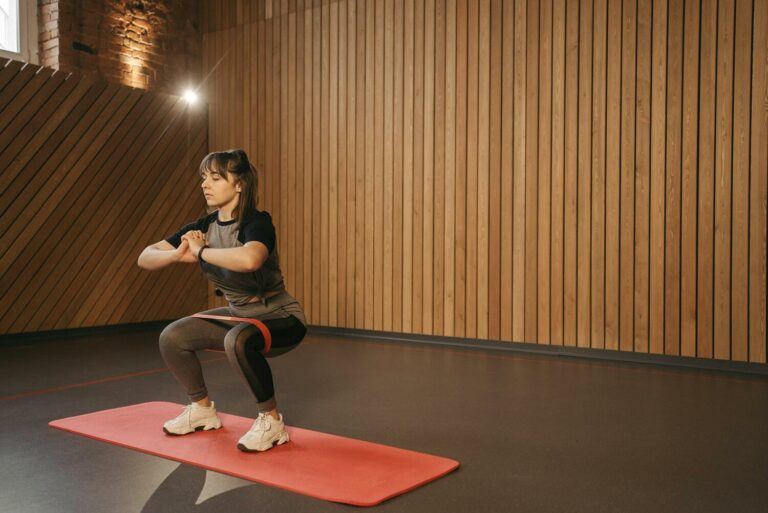Improve your balance for overall fitness, physical therapy needs, fall prevention, or to enhance performance in activities like yoga, hiking, and everyday movement!
Here we will explore a variety of balance equipment options perfect for creating a home workout haven.
We’ll delve into equipment suitable for all fitness levels, including those recovering from injuries or with specific needs like fall prevention for seniors.
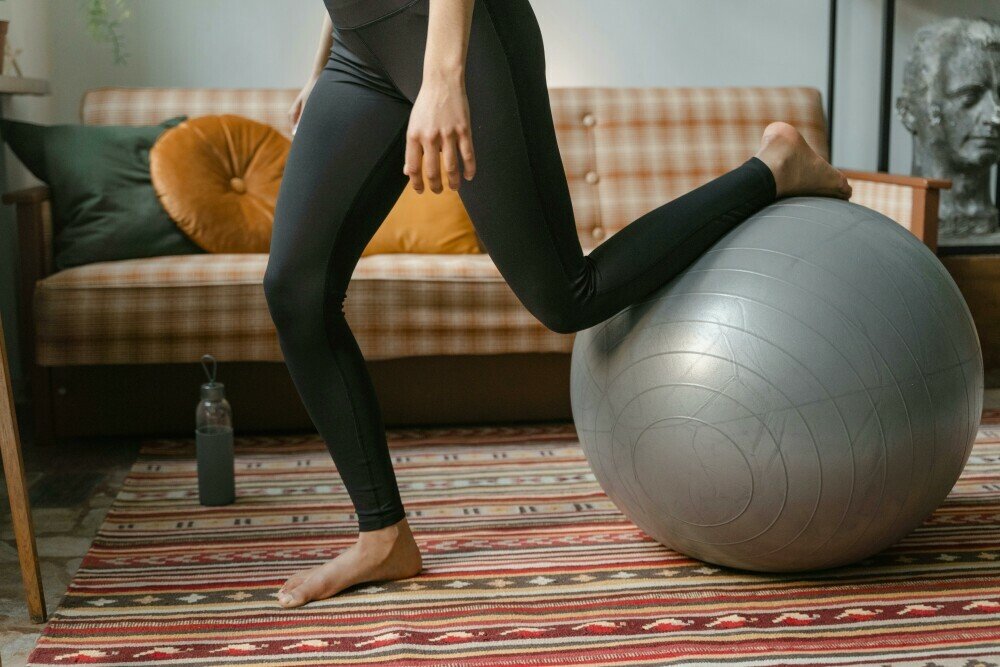
Understanding Balance Equipment
Balance equipment is designed to challenge your stability and core strength, promoting better coordination and reducing the risk of injuries. It can be particularly beneficial for:
- Physical Therapy: Specific exercises with balance equipment can aid in rehabilitation, regaining confidence, and improving movement patterns.
- Fall Prevention: Balance training is crucial for older adults or those with balance issues, helping to prevent falls and maintain independence.
- Overall Fitness: Balance exercises improve core strength, coordination, and proprioception (your body awareness in space), leading to better performance in daily activities and workouts.
Top Balance Equipment Choices for Home
Bosu Ball: This versatile trainer offers a fun and functional way to challenge your balance while performing exercises like push-ups, lunges, and planks. Beginners can use a wall for support, while advanced exercisers can explore single-leg variations.
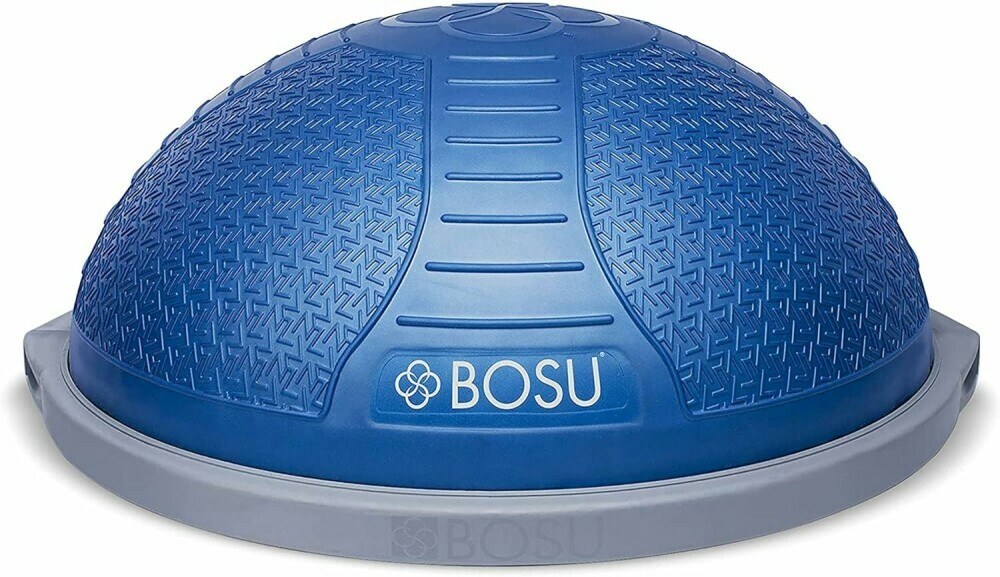
Wobble Board: Available in flat and curved options, wobble boards improve proprioception and strengthen your ankles and knees. Side lunges and single-leg squats are common exercises that can be adapted to different fitness levels.
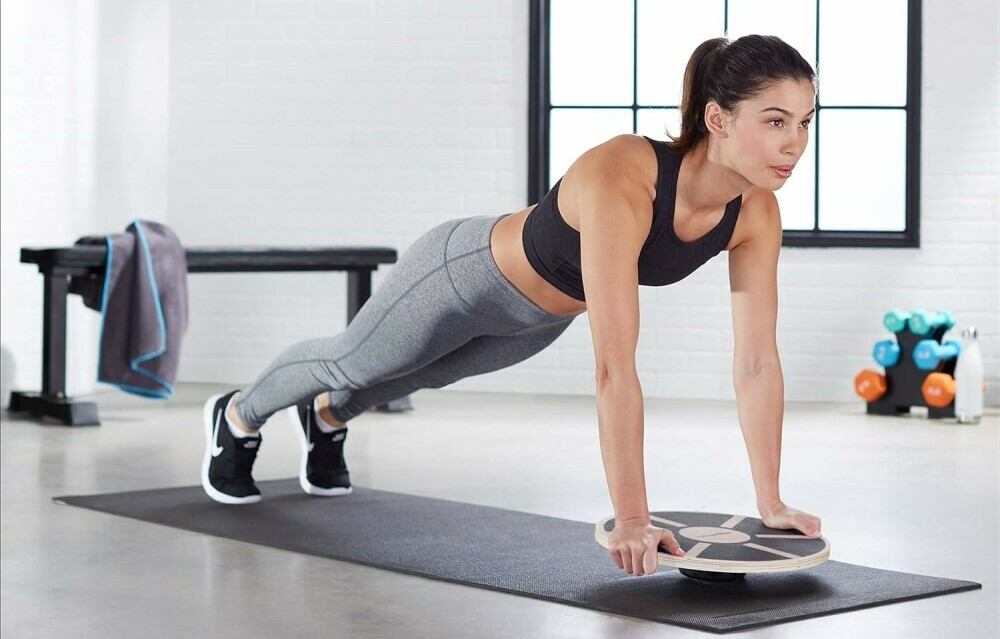
Rocker Disc: This compact disc activates your core and improves balance in all directions. Exercises like standing knee tucks and planks can be modified for beginners or advanced users with variations like single-leg exercises or resistance bands.
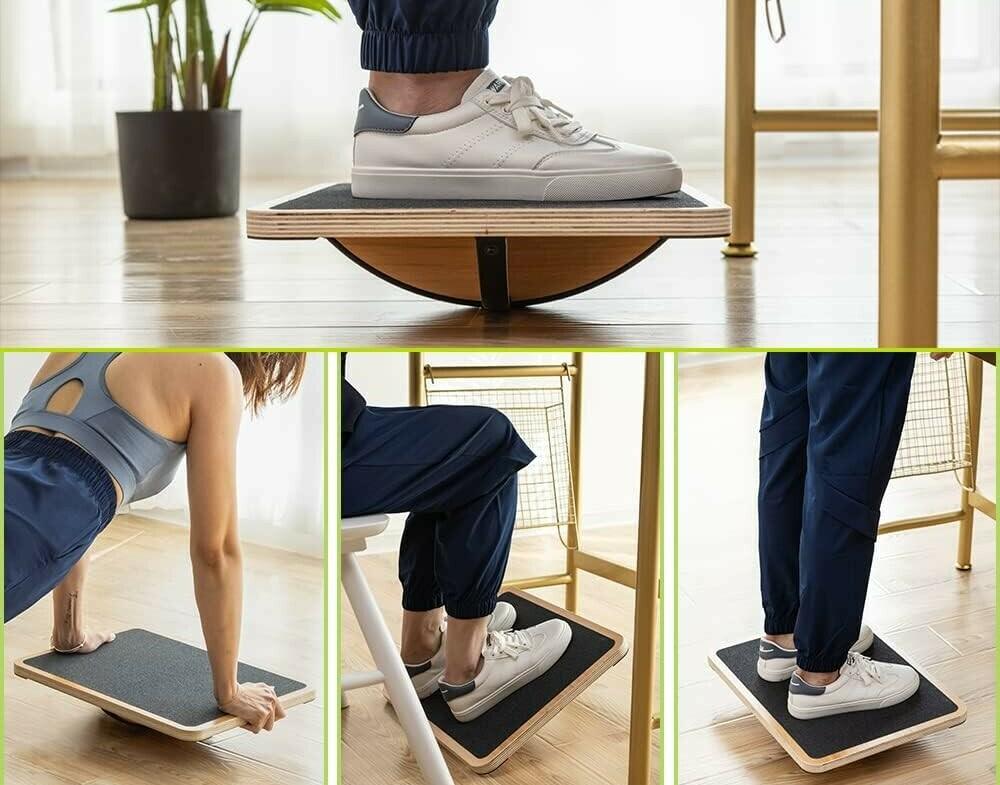
Balance Trainer (Air Cushion): Gentle on your joints, this air-filled cushion is ideal for rehabilitation exercises or low-impact workouts. Exercises like kneeling leg raises and bird-dogs can be modified for those with specific needs.
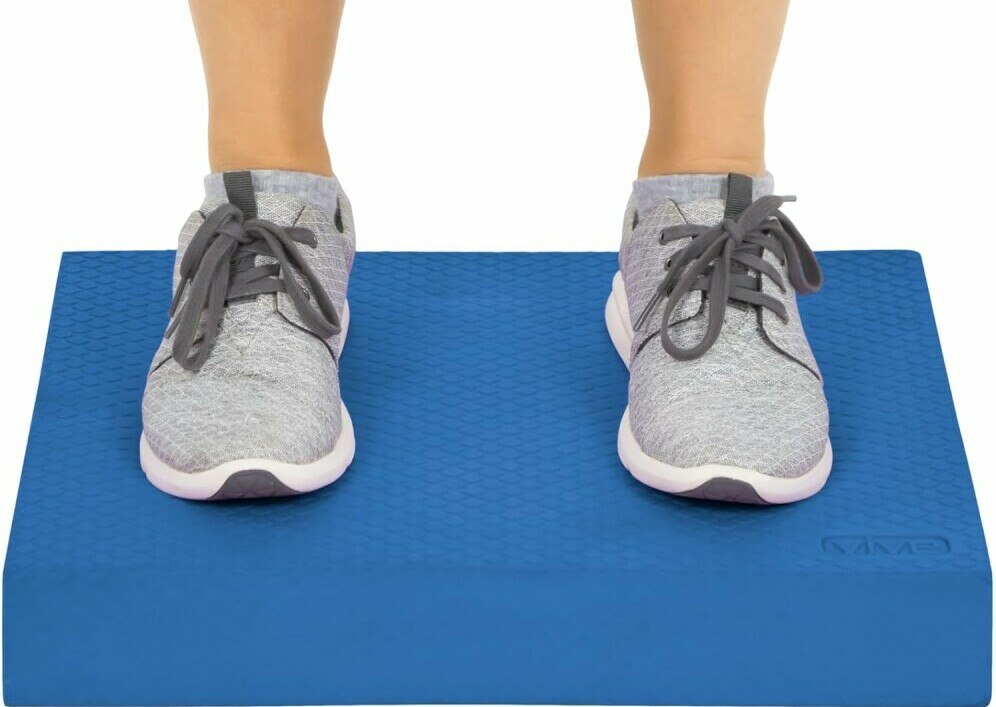
Resistance Bands: Don’t underestimate these versatile tools! They can be incorporated into various balance exercises, adding difficulty to lunges, squats, or even exercises performed on a wobble board.
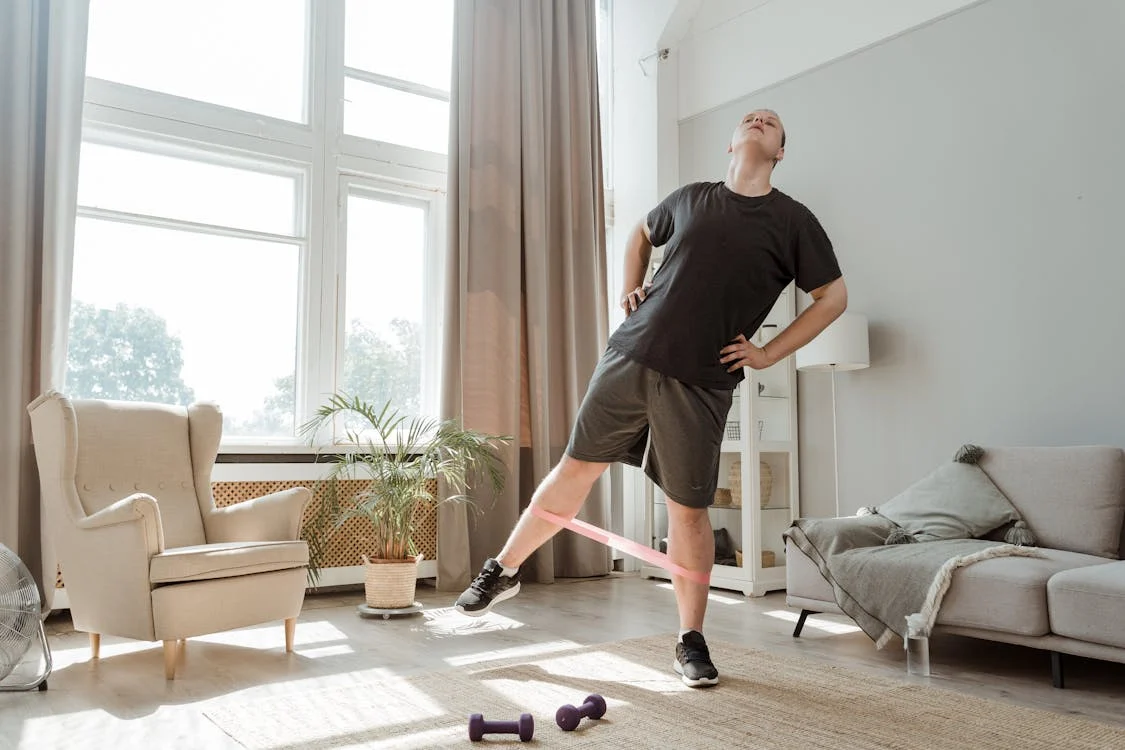
Top Balance Equipment Choices for Home (Summary)
| Equipment | Benefits | Good For | Considerations |
|---|---|---|---|
| Bosu Ball | Versatile, functional training, core engagement | All Levels (modifications available) | Requires some space |
| Wobble Board (Flat & Curved) | Improves proprioception, strengthens ankles & knees | All Levels | Flat boards for beginners, curved for advanced |
| Rocker Disc | Core activation, improves balance in all directions | All Levels (modifications available) | Compact and easy to store |
| Balance Trainer (Air Cushion) | Gentle on joints, ideal for rehab or low-impact workouts | Rehabilitation, Fall Prevention | Soft surface may not be suitable for all exercises |
| Resistance Bands | Adds difficulty to exercises, targets specific muscle groups | All Levels | Versatile and affordable |
Advanced Balance Challenges
Once you’ve mastered the exercises with basic equipment, you can push your balance boundaries with these advanced options:
- Slacklines: These suspended training straps require exceptional core strength, coordination, and focus. Start low to the ground and gradually increase the height as you progress. Safety is paramount, so ensure you have a spotter or a proper training setup.
- Inflatable Balance Pods: These come in various shapes and sizes, offering an unstable training surface that significantly challenges your balance. They can be incorporated into exercises like lunges, single-leg squats, or planks for an extra dose of difficulty.
- Surfing Balance Trainers: These rocking boards mimic the movement of a surfboard, helping to improve balance and core strength for surfers or those who enjoy board sports.
We recommend exploring advanced options like the linked above. You can find a variety of these products on Amazon.
Safety First
While these advanced options offer a great challenge, it’s crucial to prioritize safety:
- Consult a professional: Before incorporating advanced equipment, seek guidance from a physical therapist or certified fitness professional. They can assess your individual needs and recommend safe progressions.
- Start slow and progress gradually: Don’t rush into advanced exercises. Begin with simpler variations and gradually increase difficulty as your balance improves.
- Focus on proper form: Maintaining good form is essential to prevent injuries. If you feel any pain or discomfort, stop the exercise and consult a healthcare professional.
- Use proper safety measures: For equipment like slacklines, ensure you have a secure setup and a spotter present during use.
By incorporating these advanced options with a focus on safety and proper technique, you can take your balance training to the next level and experience even greater benefits.
Making Balance Training a Success (Key Takeaways):
- Start Slow & Gradually Increase: Listen to your body and progress at your own pace.
- Consult a Healthcare Professional: Especially if you have injuries or medical conditions.
- Warm-up & Cool-down: Prepare your body with light stretches before and after workouts.
- Focus on Proper Form: Quality over quantity! It’s better to perform exercises correctly at a lower intensity.
- Make it Fun! Find exercises you enjoy and incorporate them regularly into your routine.
FAQ
What is the best balance equipment for beginners?
Wobble boards (flat) and rocker discs are great options for beginners due to their relative stability.
Resistance bands can also be incorporated into exercises for a low-impact challenge.
Can balance equipment help with physical therapy?
Absolutely! Specific exercises with balance equipment can be recommended by a physical therapist to improve balance, coordination, and movement patterns during rehabilitation.
How often should I use balance equipment?
Aim for 2-3 sessions per week, with each session lasting 15-30 minutes. Consistency is key to seeing results!
Conclusion: Embrace Your Steady Self!
Investing in balance equipment can be a game-changer for your overall fitness and well-being. Remember, consistency is key!
Regular balance training will lead to noticeable improvements in stability, coordination, and confidence.
Ready to take your balance training to the next level?
Explore the specific equipment options mentioned above and find the perfect fit for your home workouts!
Don’t forget to check out our website for more resources on balance training exercises and tips on incorporating them into your routine.
A strong foundation in balance is an investment in your health.
So get started today and experience the transformative power of balance training!


